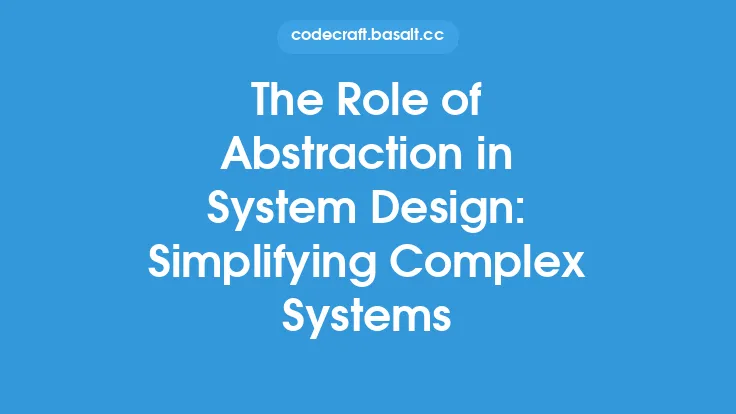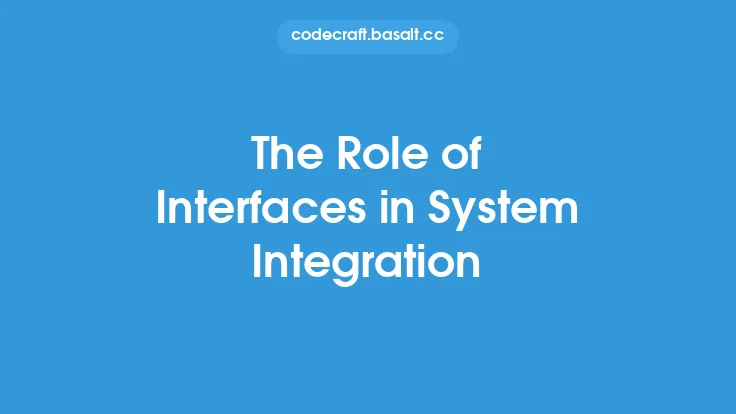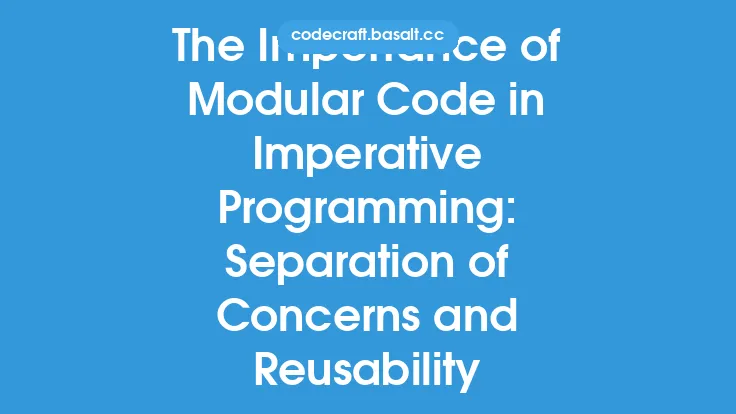In object-oriented programming (OOP), interfaces and abstract classes are two fundamental concepts that enable developers to create robust, maintainable, and scalable software systems. These constructs allow for the definition of blueprints or contracts that specify the behavior and structure of objects, making it easier to design and implement complex systems. In this article, we will delve into the role of interfaces and abstract classes in OOP, exploring their characteristics, benefits, and use cases.
Introduction to Interfaces
An interface is a abstract concept that defines a contract or a set of methods that must be implemented by any class that implements it. Interfaces are used to specify a common set of methods that can be called by other classes, without worrying about the implementation details. They are essentially a way to define a protocol or a set of rules that must be followed by any class that wants to be compatible with a particular system or framework. Interfaces are typically defined using the `interface` keyword and can contain only method signatures, constants, and nested types.
Introduction to Abstract Classes
An abstract class, on the other hand, is a class that cannot be instantiated on its own and is intended to be inherited by other classes. Abstract classes are used to provide a partial implementation of a class, leaving some methods or properties to be implemented by subclasses. They are typically defined using the `abstract` keyword and can contain both abstract and non-abstract methods, as well as properties and fields. Abstract classes are useful when there is a need to share code between related classes, but also require some degree of customization or extension.
Key Differences Between Interfaces and Abstract Classes
While both interfaces and abstract classes are used to define contracts or blueprints for objects, there are some key differences between them. Interfaces are more flexible and can be implemented by any class, regardless of its inheritance hierarchy. Abstract classes, on the other hand, are more rigid and can only be inherited by classes that are part of the same inheritance hierarchy. Additionally, interfaces can only contain method signatures and constants, while abstract classes can contain both abstract and non-abstract methods, as well as properties and fields.
Benefits of Using Interfaces and Abstract Classes
The use of interfaces and abstract classes in OOP provides several benefits, including improved code reusability, increased flexibility, and enhanced maintainability. By defining a contract or a set of methods that must be implemented, interfaces and abstract classes enable developers to write code that is more modular and easier to extend. They also provide a way to decouple dependent components, making it easier to modify or replace individual components without affecting the rest of the system.
Use Cases for Interfaces and Abstract Classes
Interfaces and abstract classes have a wide range of use cases in OOP, including the definition of APIs, frameworks, and libraries. They are also useful in situations where there is a need to provide a common interface or contract for a set of related classes. For example, in a payment processing system, an interface might be used to define a contract for payment gateways, such as PayPal or credit card processors. Abstract classes, on the other hand, might be used to provide a partial implementation of a payment gateway, leaving some methods or properties to be implemented by subclasses.
Implementing Interfaces and Abstract Classes
Implementing interfaces and abstract classes in OOP typically involves defining the interface or abstract class, and then creating concrete classes that implement or inherit from them. For example, in Java, an interface might be defined using the `interface` keyword, and then implemented by a concrete class using the `implements` keyword. Similarly, an abstract class might be defined using the `abstract` keyword, and then inherited by a concrete class using the `extends` keyword.
Best Practices for Using Interfaces and Abstract Classes
When using interfaces and abstract classes in OOP, there are several best practices to keep in mind. First, interfaces and abstract classes should be used sparingly and only when necessary, as they can add complexity to a system. Second, interfaces and abstract classes should be designed to be flexible and extensible, allowing for easy modification or extension. Finally, interfaces and abstract classes should be well-documented and clearly communicated to other developers, to ensure that they are used correctly and consistently throughout a system.
Common Pitfalls and Challenges
While interfaces and abstract classes are powerful tools in OOP, there are also some common pitfalls and challenges to be aware of. One common pitfall is overusing interfaces and abstract classes, which can lead to a complex and rigid system. Another challenge is ensuring that interfaces and abstract classes are properly documented and communicated to other developers, to avoid confusion or misinterpretation. Additionally, interfaces and abstract classes can make it more difficult to debug and test code, as the implementation details may be hidden or abstracted away.
Conclusion
In conclusion, interfaces and abstract classes are fundamental concepts in OOP that enable developers to create robust, maintainable, and scalable software systems. By defining contracts or blueprints for objects, interfaces and abstract classes provide a way to decouple dependent components, improve code reusability, and increase flexibility. While there are some common pitfalls and challenges to be aware of, the benefits of using interfaces and abstract classes far outweigh the costs. By following best practices and using these constructs judiciously, developers can create software systems that are more modular, extensible, and maintainable.





